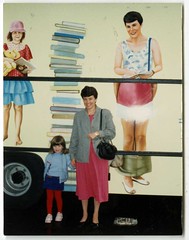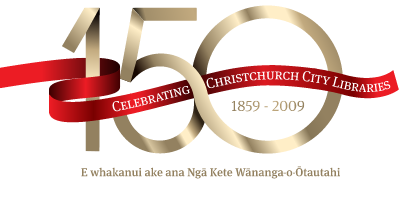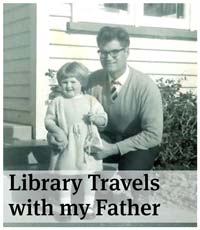Mobile Library - Waka Hau-kōrero
 Mobile libraries have been an important tool for Christchurch City Libraries to deliver services to areas not easily served by permanent library facilities. In the 1970s both Canterbury Public Library and Waimairi County Library used mobile libraries.
Mobile libraries have been an important tool for Christchurch City Libraries to deliver services to areas not easily served by permanent library facilities. In the 1970s both Canterbury Public Library and Waimairi County Library used mobile libraries.
Canterbury Public’s first mobile library
Canterbury Public Library’s mobile library service began on 2 June 1970. Planning for a mobile library service began at a time when suburban library service in Christchurch was delivered entirely by community run libraries receiving subsidies and help from the Christchurch City Council. Some areas of the city had no library service at all and other areas were over supplied. A mobile library service was seen as a way of providing service without vast capital expenditure.
After investigating mobile library services in other cities and the Country Library Service vans, the Library decided to build to the maximum legal dimensions in order to house the greatest possible number of books and to use a fixed chassis. A 1969 Bedford SB chassis was purchased and New Zealand Motor Bodies was selected to design and build the body.
The chassis had a length of 32ft 11/2inches and the bus had a capacity of 3,500 books. The bus had three perspex panels in the ceiling to let in light. The ceiling was pale cream, the floor pale greenstone vinyl and the shelves anodised aluminium. The library had a plug in electrical supply point but also a 12 volt battery for stops without power and emergency lighting. Ventilation proved to be a problem on hot days but a fan and screens over the perspex panels were used to try and improve conditions.
The service began with stops at Shirley, East Linwood and Merivale in supermarket carparks and at Aranui outside the shopping centre. The other stops were Waltham, outside the school and shopping centre and Addington where the library made brief visits to council pensioner cottages. Stops had book deposit bins for the return of books. The bus was staffed by a librarian/driver with extra assistance at busy times. Stock for the mobile came from the suburban extension stock pool.
A report by Deputy City Librarian Michael Wooliscroft reported that over the next 14 months it travelled 5000 miles and issued 100,000 books.
Waimairi mobile library
 During the late 1970s a mobile library service was developed to serve outlying areas of Waimairi County including the Styx, Marshland and Belfast ridings.
During the late 1970s a mobile library service was developed to serve outlying areas of Waimairi County including the Styx, Marshland and Belfast ridings.
“I think a mobile library would give greater flexibility and gauge what use there is likely to be of a permanent branch”
said Mrs Dorothea Brown, the Waimairi County Librarian.
“In the Styx and Marshland areas there is nothing like the services in other parts of the county. At the moment the council runs three collections of about 100 books each, taken over from the Country Library Service. The books are stored in people’s homes and local halls and the service is mostly a friendly arrangement between neighbours.”
At the time the County Council considered the first priority to be a library in the east in Parklands or Burwood.
The Waimairi County Libraries mobile library was an ex-National Library van. The service was launched in late 1979/early 1980. The bus exterior was painted blue and yellow.
After amalgamation
At the time of local government amalgamation, the bus routes of both library systems were assessed and a new timetable put together. Mobile 2 (with the number plate READ) was the former Waimairi District Libraries mobile library and Mobile 1 (with the number plate BOOKS) was the Canterbury Public Library vehicle.
 In March 1990 two new mobile buses replaced the old Bedfords. The buses were designed by Designline in Ashburton. Each bus was decorated with murals. The mural artist Tim Croucher used family members and customers. Chrissie Williams (later a city councillor), her partner Graham Allan and son Ben, and her niece and nephew Brigid and Nicholas Spittal-Williams were among the models and when the bus was due for repainting 12 years later they were on hand to line up against their earlier images.
In March 1990 two new mobile buses replaced the old Bedfords. The buses were designed by Designline in Ashburton. Each bus was decorated with murals. The mural artist Tim Croucher used family members and customers. Chrissie Williams (later a city councillor), her partner Graham Allan and son Ben, and her niece and nephew Brigid and Nicholas Spittal-Williams were among the models and when the bus was due for repainting 12 years later they were on hand to line up against their earlier images.
Tim Croucher has since moved to Hamilton but other examples of his work around the city included the Dominion Breweries Warehouse in Brougham Street, Bronski’s Dairy in Ferry Road and the much talked about welders in Madras Street opposite the Polytechnic which is used as a large billboard by Perry’s Café.
Each new bus could carry about 4000 books and magazines and continued regular services across the city, moving stops and areas as new libraries were built. Librarians on the buses began to use laptops to store customer transactions. The information was downloaded when the buses returned to base. The next move was to link the buses to the library network using radio repeating stations on the Port Hills.
In 2001 the library trialled delivering a city-wide service with one bus and this later became permanent. As well as serving customers across the city, over the years the bus was a regular attendee at community events such as the Teddy Bears Picnic and Children’s Day.
In June 2003 the Mobile Library went off the road for a complete makeover. Some of the internal changes included new wall linings, a new desk purpose-built to house computer equipment, new shelving, heating and storage, plus improved access with a ramp and lower step heights.
The exterior was given a new skin of fibreglass applied over the existing bodywork, repainted and new vinyl graphics applied featuring library branding characters and messages. The base colours were orange for the top section and blue on the bottom. The bus’s well known number plate BOOKS remained. The bus went back on the road on Wednesday 2 July, 2003.
Into the Future
In 2009 the Mobile Library had 36 weekly stops. Also in 2009 a major review of services and public consultation was undertaken. The review produced proposals to reduce some stops in areas now served by existing libraries and to open new stops in areas where there were service gaps. It was also proposed that the Mobile Library would also have increased participation community programmes and events. In the second school term of 2010 the new timetable was implemented with minor changes arising from the public consultation.



